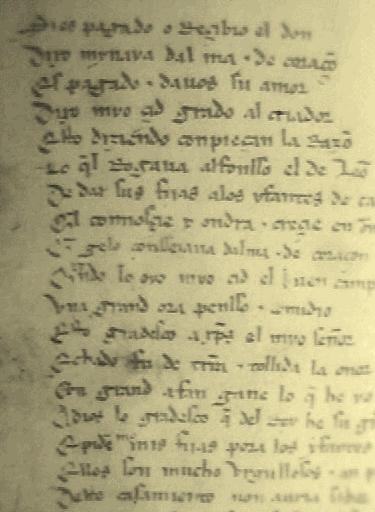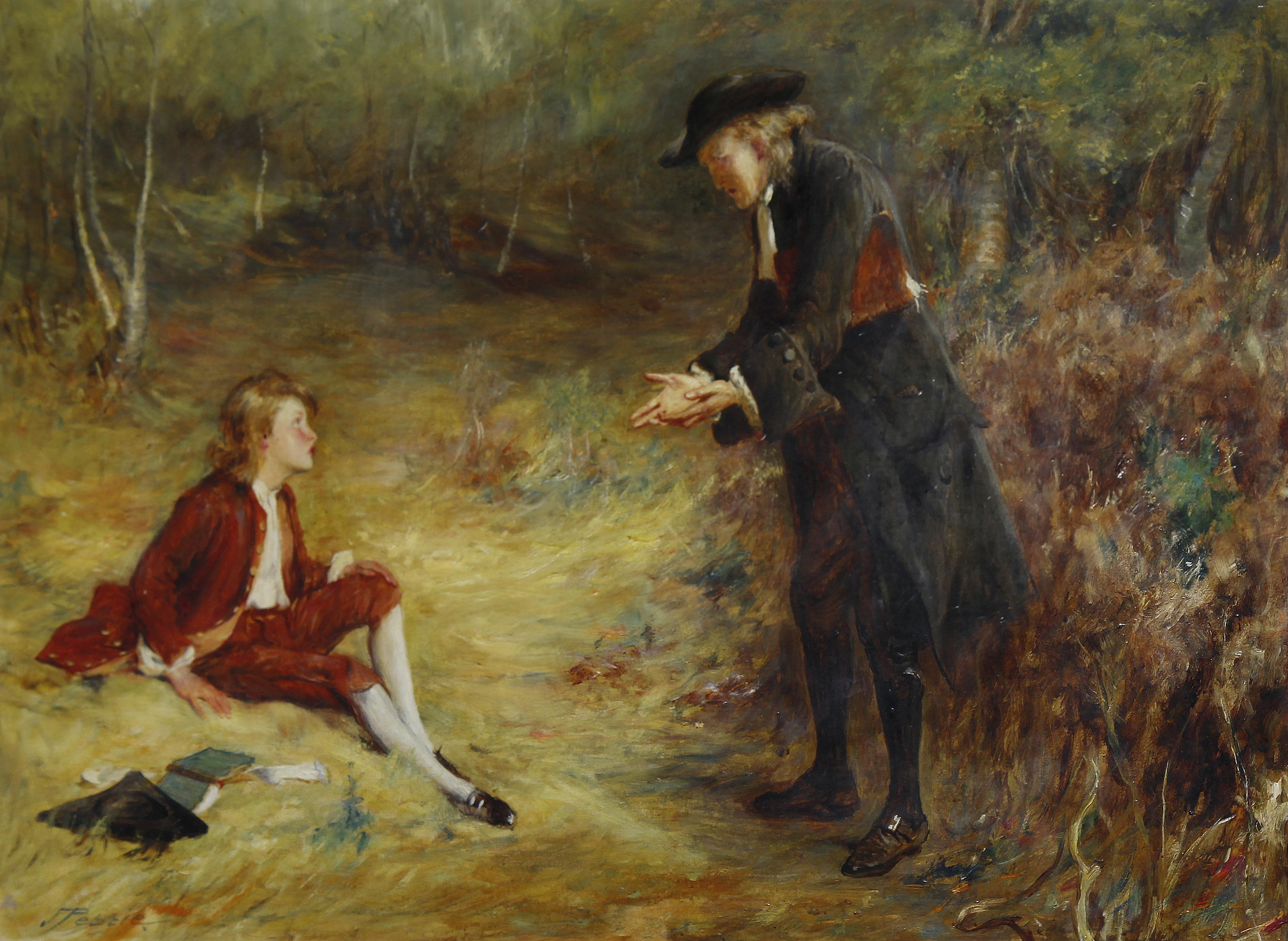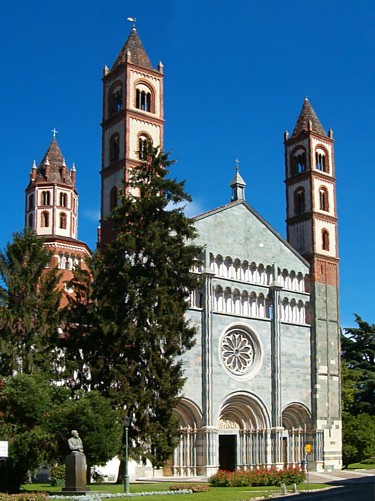|
Old Gallo-Italic Language
Old Gallo-Italic, also referred as Old Lombard, or Old Northern Italian is a Gallo-Romance languages, Gallo-Romance language spoken from 900 until 1500. The language is similar to Old Occitan, which was spoken around the same area. Most texts were written in the Lombard koiné. History Before the 13th century Before the 13th century, the literary language in northern Italy was Old Occitan, being prominent in the 12th century. The first text in a vernacular, in an early form of Piedmontese language, Piedmontese, is in the Church of Santa Maria Maggio in Vercelli, dating from 1040. Another text from 1106 is in the Church of Sant'Evasio in Casale Monferrato. One of the works of Raimbaut de Vaqueiras, , featured early Genoese dialect, Genovese Ligurian. The ''sermones subalpini'' was a text in early Old Piedmontese from the 12th century, and is a document devoted to the education of the Knights Templar stationed in Piedmont. 13th and 14th centuries Around the 13th century, man ... [...More Info...] [...Related Items...] OR: [Wikipedia] [Google] [Baidu] |
Northern Italy
Northern Italy (, , ) is a geographical and cultural region in the northern part of Italy. The Italian National Institute of Statistics defines the region as encompassing the four Northwest Italy, northwestern Regions of Italy, regions of Piedmont, Aosta Valley, Liguria and Lombardy in addition to the four Northeast Italy, northeastern Regions of Italy, regions of Trentino-Alto Adige/Südtirol, Trentino-Alto Adige, Veneto, Friuli-Venezia Giulia and Emilia-Romagna. With a total area of , and a population of 27.4 million as of 2022, the region covers roughly 40% of the Italian Republic and contains 46% of its population. Two of Italy's largest metropolitan areas, Milan and Turin, are located in the region. Northern Italy's GDP was estimated at Euro, €1 trillion in 2021, accounting for 56.5% of the Italian economy. Northern Italy has a rich and distinct culture. Thirty-seven of the fifty-nine List of World Heritage Sites in Italy, World Heritage Sites in Italy are found in the re ... [...More Info...] [...Related Items...] OR: [Wikipedia] [Google] [Baidu] |
Vulgar Latin
Vulgar Latin, also known as Colloquial, Popular, Spoken or Vernacular Latin, is the range of non-formal Register (sociolinguistics), registers of Latin spoken from the Crisis of the Roman Republic, Late Roman Republic onward. ''Vulgar Latin'' as a term is both controversial and imprecise. Spoken Latin existed for a long time and in many places. Scholars have differed in opinion as to the extent of the differences, and whether Vulgar Latin was in some sense a different language. This was developed as a theory in the nineteenth century by François Just Marie Raynouard, Raynouard. At its extreme, the theory suggested that the written register formed an elite language distinct from common speech, but this is now rejected. The current consensus is that the written and spoken languages formed a continuity much as they do in modern languages, with speech tending to evolve faster than the written language, and the written, formalised language exerting pressure back on speech. ''Vulgar ... [...More Info...] [...Related Items...] OR: [Wikipedia] [Google] [Baidu] |
Giacomin Da Verona
Edward "Ed" Giacomin (born June 6, 1939) is a Canadian retired professional ice hockey goaltender who played for the New York Rangers and Detroit Red Wings in the National Hockey League between 1965 and 1978. Playing career Giacomin began his professional career in 1959 when he played four games for the Washington Presidents of the Eastern Hockey League. The Eagles had originally sought his brother Rollie, but work commitments meant he was unable to play, so suggested Eddie instead. Giacomin followed that with brief stints with the Clinton Comets in 1958–59 and 1959–60. Despite suffering serious burns in a kitchen accident, Giacomin made the roster of the Providence Reds in the 1960–61 season. In the Original Six days of the 1960s, with only six starting goaltending jobs in the NHL, positions were hard to obtain, and Giacomin starred for the Reds for five full seasons. NHL teams, particularly the Detroit Red Wings and the New York Rangers, began to express interest in Gia ... [...More Info...] [...Related Items...] OR: [Wikipedia] [Google] [Baidu] |
Guido Faba
Guido Faba ( – ) was a notary, scribe and teacher of rhetoric from Bologna. At least eleven works are attributed to him, all on rhetoric, mainly the ''ars dictaminis'' (art of letter writing). Although he wrote mainly in Latin, two of his works contain advice for using vernacular Italian in formal settings. Life Guido included a short autobiography of himself in the preface to his ''Rota nova'' in 1225–1226. It is the most important source for his life. Guido was born in Bologna in or shortly before 1190. His father's name was Niccolò. In some manuscripts of his work, he is called Guido de Lombardia. According to his own account, he received the nickname Faba as a child "because of the effect of his antics". It comes from the Latin expression ''fabas dicere'', to be a jokester., citing It has, however, been suggested that he was related to Aliprando Faba, to whom he dedicated his ''Summa dictaminis''. By 1210, Guido had a master's degree. According to his autobiographical ... [...More Info...] [...Related Items...] OR: [Wikipedia] [Google] [Baidu] |
Sermon Divin
A sermon is a religious discourse or oration by a preacher, usually a member of clergy. Sermons address a scriptural, theological, or moral topic, usually expounding on a type of belief, law, or behavior within both past and present contexts. Elements of the sermon often include exposition, exhortation, and practical application. The act of delivering a sermon is called preaching. In secular usage, the word ''sermon'' may refer, often disparagingly, to a lecture on morals. In Christian practice, a sermon is usually preached to a congregation in a place of worship, either from an elevated architectural feature, known as a pulpit or an ambo, or from behind a lectern. The word ''sermon'' comes from a Middle English word which was derived from Old French, which in turn originates from the Latin word meaning 'discourse.' A ''sermonette'' is a short sermon (usually associated with television broadcasting, as stations would present a sermonette before Sign-off (broadcast), signing of ... [...More Info...] [...Related Items...] OR: [Wikipedia] [Google] [Baidu] |
Bonvesin Da La Riva
Bonvesin da la Riva (; sometimes Italianized in spelling Bonvesino or Buonvicino; ) was an Italian Medieval writer and poet. Bonvesin was a notable Lombardy, Lombard poet and writer, giving one of the List of languages by first written accounts, first known examples of the written Lombard language. He is often described as the "father" of the Lombard language. Biography A well-to-do Milanese lay member of the Humiliati, Ordine degli Umiliati (literally, "Order of the Humble Ones") Bonvesin was a teacher of (Latin) grammar in Legnano and in Milan. In 1291, he bought a house in the suburb of Porta Ticinese. There he dwelt and prospered, surviving two wives (Benghedice and Floramonte) and dying without issue between 1313 and 1315. In the interim, he had accumulated and preserved a comfortable capital, as we know from his two wills (of 1304 and 1313, respectively). In 1290, he loaned 200 lire (a denomination of much greater weight 700 years ago) to the Ospedale della Colombetta at a r ... [...More Info...] [...Related Items...] OR: [Wikipedia] [Google] [Baidu] |
Old French
Old French (, , ; ) was the language spoken in most of the northern half of France approximately between the late 8th [2-4; we might wonder whether there's a point at which it's appropriate to talk of the beginnings of French, that is, when it was deemed no longer make to think of the varieties spoken in Gaul as Latin. Although a precise date can't be given, there is a general consensus (see Wright 1982, 1991, Lodge 1993) that an awareness of a vernacular, distinct from Latin, emerged at the end of the eighth century.] and mid-14th centuries. Rather than a unified Dialect#Dialect or language, language, Old French was a Dialect cluster, group of Romance languages, Romance dialects, Mutual intelligibility, mutually intelligible yet Dialect continuum, diverse. These dialects came to be collectively known as the , contrasting with the , the emerging Occitano-Romance languages of Occitania, now the south of France. The mid-14th century witnessed the emergence of Middle French, the lang ... [...More Info...] [...Related Items...] OR: [Wikipedia] [Google] [Baidu] |
Genoese Dialect
Genoese, locally called or (), is the prestige dialect of Ligurian, spoken in and around the Italian city of Genoa, the capital of Liguria. A majority of remaining speakers of Genoese are elderly. Several associations are dedicated to keeping the dialect alive, examples of which are in Genoa and in Chiavari. Written literature has been produced in Genoese since the 13th century, and the orthography has evolved in-step with the language. There are currently two spelling systems in common use, with varying degrees of standardisation. One, proposed in 2008 by the cultural association ''A Compagna'', attempts to closely match in writing the pronunciation of the now-extinct variant of Genoese which used to be spoken in the '' Portoria'' neighbourhood of Genoa. Another spelling system was proposed by a group of writers, journalists and academics by standardising the traditional orthography of 19th- and 20th-century Genoese newspapers. This is the spelling used, amongst others, by ... [...More Info...] [...Related Items...] OR: [Wikipedia] [Google] [Baidu] |
Raimbaut De Vaqueiras
__NOTOC__ Raimbaut de Vaqueiras or Vaqueyras (fl. 1180 – 1207) was a Provençal troubadour and, later in his life, knight. His life was spent mainly in Italian courtsAmelia E. Van Vleck, ''The Lyric Texts'' p. 33, in ''Handbook of the Troubadours'' (1995), edited by F. R. P. Akehurst and Judith M. Davis. until 1203, when he joined the Fourth Crusade. His writings, particularly the so-called ''Epic Letter'', form an important commentary on the politics of the Latin Empire in its earliest years. Vaqueiras's works include a multilingual poem, ''Eras quan vey verdeyar'' where he used French, Tuscan, Galician-Portuguese and Gascon, together with his own Provençal. Vaqueiras was from Vacqueyras, near Orange. He spent most of his career as court poet and close friend of Boniface I of Montferrat, with whom he served in battle against the communes of Asti and Alessandria. Vaqueiras claimed he earned a knighthood through protecting Boniface with his shield in battle at Messin ... [...More Info...] [...Related Items...] OR: [Wikipedia] [Google] [Baidu] |
Casale Monferrato
Casale Monferrato () is a town in the Piedmont region of Northwest Italy, northwestern Italy, in the province of Alessandria. It is situated about east of Turin on the right bank of the Po River, Po, where the river runs at the foot of the Montferrat hills. Beyond the river lies the vast plain of the Po valley. An ancient Roman ''municipium'', the town has been the most important trade and manufacturing centre of the area for centuries. After the fall of the Roman Empire, Casale became a free municipality and, in the 15th and early 16th centuries, served as the capital of the House of Palaiologos. Then in 1536, the town passed to the House of Gonzaga, Gonzagas who fortified it with a large citadel. In the 17th century, Casale was heavily involved in the War of the Mantuan Succession and besieged by French and Spanish troops. During the wars of Italian unification the town was a defensive bulwark against the Austrian Empire. In the 1900s Casale, in the middle of the Turin-Milan-Ge ... [...More Info...] [...Related Items...] OR: [Wikipedia] [Google] [Baidu] |
Vercelli
Vercelli (; ) is a city and ''comune'' of 46,552 inhabitants (January 1, 2017) in the Province of Vercelli, Piedmont, northern Italy. One of the oldest urban sites in northern Italy, it was founded, according to most historians, around 600 BC. The city is situated on the Sesia River in the Pianura padana, plain of the Po River between Milan and Turin. It is an important centre for the cultivation of rice and is surrounded by rice paddies, which are flooded in the summer. The climate is typical of the Po Valley with cold, foggy winters ( in January) and oppressive heat during the summer months ( in July). Rainfall is most prevalent during the spring and autumn; thunderstorms are common in the summer. The languages spoken in Vercelli are Italian language, Italian and Piedmontese language, Piedmontese; the variety of Piedmontese native to the city is called ''Varsleis''. The world's first university funded by public money was established in Vercelli in 1228 (the seventh universit ... [...More Info...] [...Related Items...] OR: [Wikipedia] [Google] [Baidu] |




